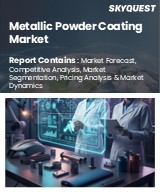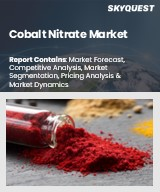
|
시장보고서
상품코드
1734824
세계의 아릴아미드 안료 시장 예측(-2032년) : 유형, 형태, 색, 용도, 최종 사용자, 지역별 분석Arylamide Pigments Market Forecasts to 2032 - Global Analysis By Type (Organic Pigments, Inorganic Pigments and Other Types), Form, Color, Application, End User, and By Geography |
||||||
Stratistics MRC에 따르면 세계의 아릴아미드 안료 시장은 2025년 6,600만 달러, 2032년에는 1억 3,470만 달러에 이를 것으로 예측되며, 예측 기간 동안 CAGR 8.25%로 성장할 전망입니다.
아릴아미드 안료는 높은 내구성, 내광성 및 화학적 안정성으로 잘 알려진 합성 유기 착색제입니다. 잉크, 코팅, 플라스틱 및 섬유에 광범위하게 사용되는 이 안료는 생생한 색상과 변색에 대한 저항성을 제공합니다. 분자 구조가 열악한 조건에서도 우수한 성능을 보장하므로 자동차 도료 및 산업용 애플리케이션에 이상적입니다. 아릴아미드 안료는 이동성이 없고 색상이 오래 지속되며 엄격한 산업 품질 표준을 충족하기 때문에 기존 염료보다 선호됩니다.
환경 보호국(EPA)에 따르면 무독성 안료를 사용하면 생산 공정에서 유해한 배출을 줄일 수 있어 글로벌 지속 가능성 목표에 부합할 수 있다고 합니다.
자동차 코팅 부문의 높은 수요
아릴아미드 안료는 뛰어난 색상 선명도와 내구성으로 인해 자동차 코팅에 널리 사용됩니다. 특히 신흥 시장을 중심으로 자동차 산업이 성장하면서 고성능 안료에 대한 수요가 증가하고 있습니다. 미적으로 매력적인 차량에 대한 소비자의 선호도가 안료 채택을 촉진하고 있습니다. 코팅 기술의 혁신은 아릴아미드 안료의 성능을 향상시킵니다. 친환경 코팅에 대한 엄격한 규제가 시장 성장을 뒷받침하고 있습니다. 전기자동차 생산이 증가함에 따라 코팅 요구 사항이 증가하고 있습니다.
다른 안료에 비해 제한된 색상 범위
아릴아미드 안료는 프탈로시아닌 안료와 같은 대체 안료에 비해 색상 스펙트럼이 좁습니다. 이러한 한계로 인해 다양한 색상 옵션이 필요한 산업에서 적용이 제한됩니다. 제조업체는 고객의 맞춤형 색상 요구를 충족하는 데 어려움을 겪습니다. 섬유와 플라스틱에서 선명하고 독특한 색상에 대한 선호는 시장 성장을 방해합니다. 색상 범위 확장을 위한 높은 R&D 비용은 투자를 저해합니다. 더 다양한 색상을 제공하는 안료와의 경쟁이 채택에 영향을 미칩니다.
바이오 기반 아릴아미드 안료 개발
지속 가능한 친환경 안료로의 전환은 바이오 기반 아릴아미드 안료에 대한 기회를 창출하고 있습니다. 친환경 화학의 혁신으로 환경적으로 안전한 안료를 생산할 수 있게 되었습니다. 지속 가능한 제품에 대한 소비자 수요가 증가하면서 시장의 관심이 높아지고 있습니다. 바이오 기반 소재에 대한 규제 지원은 제조업체의 R&D 투자를 장려합니다. 이러한 안료는 합성 안료와 비슷한 성능을 제공하므로 시장 매력도를 높일 수 있습니다. 생명공학 기업과의 파트너십은 혁신을 촉진하고 있습니다. 코팅과 플라스틱의 지속 가능성 트렌드는 시장 확대를 뒷받침합니다.
유기 안료로 대체
퀴나크리돈과 페릴렌과 같은 유기 안료는 뛰어난 색상 강도와 다양한 활용성을 제공하므로 아릴아미드 안료에 위협이 되고 있습니다. 이러한 대체 안료는 잉크 및 코팅과 같은 고부가가치 애플리케이션에서 주목받고 있습니다. 일부 유기 안료의 낮은 생산 비용은 비용에 민감한 제조업체의 관심을 끌고 있습니다. 유기 안료 배합의 발전으로 내구성과 성능이 향상되었습니다. 아릴아미드 안료의 장점에 대한 인식 부족으로 인해 채택이 제한되고 있습니다. 천연 및 유기농 소재로의 전환은 시장 성장을 더욱 어렵게 만듭니다.
COVID-19의 영향 :
COVID-19 팬데믹으로 인해 공급망이 중단되면서 아릴아미드 안료의 생산과 유통이 지연되었습니다. 봉쇄 기간 동안 자동차 생산이 감소하면서 코팅 수요가 감소했습니다. 그러나 건설 및 포장 산업이 회복되면서 안료 사용량이 증가했습니다. 노동력 부족과 물류 문제는 제조 공정에 영향을 미쳤습니다. 팬데믹은 지속 가능한 안료로의 전환을 가속화하여 바이오 기반 아릴아미드 안료에 혜택을 주었습니다. 원자재 비용 상승은 경제성에 영향을 미쳤습니다. 팬데믹 이후 자동차 및 산업 부문의 성장이 시장 회복을 견인할 것으로 예상됩니다.
유기 안료 부문은 예측 기간 동안 가장 큰 규모가 될 전망
유기 안료 부문은 우수한 색상 강도와 친환경적 특성으로 인해 예측 기간 동안 가장 큰 시장 점유율을 차지할 것으로 예상됩니다. 아릴아미드 기반 유기 안료는 생생한 색상으로 인해 코팅, 잉크 및 플라스틱에 널리 사용됩니다. 지속 가능하고 무독성 안료에 대한 수요 증가가 이 부문의 성장을 뒷받침하고 있습니다. 중금속 기반 안료에 대한 규제로 인해 유기 안료에 대한 시장 선호도가 높아졌습니다. 유기 안료 배합의 발전으로 내구성과 응용 분야의 다양성이 향상되었습니다. 자동차 및 포장 산업과 환경 문제에 대한 소비자 인식이 상당한 수요를 주도하고 있습니다.
분말 부문은 예측 기간 동안 가장 높은 CAGR을 가질 전망
예측 기간 동안 분말 부문은 취급의 용이성과 산업 응용 분야의 다양성으로 인해 가장 높은 성장률을 보일 것으로 예상됩니다. 분말 아릴아미드 안료는 균일한 분산을 위해 코팅 및 플라스틱에 선호됩니다. 자동차 및 건설 분야에서 고성능 코팅에 대한 수요 증가가 성장을 촉진하고 있습니다. 분말 가공 기술의 혁신으로 안료의 품질과 효율성이 향상되었습니다. 다양한 제조 공정과의 호환성이 이 부문의 채택을 뒷받침합니다. 신흥 시장의 산업화가 성장하면서 수요가 증가하고 있습니다.
최대 점유율을 차지하는 지역 :
예측 기간 동안 아시아태평양 지역은 중국 및 인도와 같은 국가의 강력한 자동차 및 산업 부문으로 인해 가장 큰 시장 점유율을 차지할 것으로 예상됩니다. 급속한 산업화와 도시화로 인해 코팅과 플라스틱에 대한 수요가 증가하고 있습니다. 주요 안료 제조업체의 존재는 시장 성장을 강화합니다. 낮은 생산 비용과 우호적인 무역 정책으로 경쟁력이 강화됩니다. 가처분 소득의 증가는 미적으로 매력적인 제품에 대한 수요를 촉진합니다. 지속 가능한 제조 관행에 대한 정부의 지원은 확장을 돕습니다.
CAGR이 가장 높은 지역 :
예측 기간 동안 북미 지역은 친환경 및 고성능 안료에 대한 강력한 수요에 힘입어 가장 높은 CAGR을 기록할 것으로 예상됩니다. 이 지역의 첨단 자동차 및 포장 산업이 안료 채택을 주도하고 있습니다. 엄격한 환경 규제로 인해 바이오 기반 아릴아미드 안료의 사용이 촉진되고 있습니다. 혁신적인 안료 배합을 위한 R&D 투자가 시장 성장을 촉진합니다. 지속 가능한 코팅 트렌드가 소비자들 사이에서 주목을 받고 있습니다. 선도적인 코팅 제조업체의 존재는 확장을 지원합니다. 환경 지속 가능성에 대한 인식이 높아지면서 시장 잠재력이 가속화됩니다.
무료 맞춤화 서비스 :
이 보고서를 구독하는 고객에게는 다음 무로 맞춤화 옵션 중 하나를 제공합니다.
- 기업 프로파일
- 추가 시장 기업의 종합적 프로파일링(최대 3개사)
- 주요 기업의 SWOT 분석(최대 3개사)
- 지역 세분화
- 고객의 관심에 응한 주요국 시장 추계, 예측 및 CAGR(참고 : 타당성 확인에 따라 다름)
- 경쟁 벤치마킹
- 제품 포트폴리오, 지리적 존재, 전략적 제휴에 기반한 주요 기업 벤치마킹
목차
제1장 주요 요약
제2장 서문
- 개요
- 이해관계자
- 조사 범위
- 조사 방법
- 데이터 마이닝
- 데이터 분석
- 데이터 검증
- 조사 접근
- 조사 자료
- 1차 조사 자료
- 2차 조사 자료
- 전제조건
제3장 시장 동향 분석
- 성장 촉진요인
- 억제요인
- 기회
- 위협
- 용도 분석
- 최종 사용자 분석
- 신흥 시장
- COVID-19의 영향
제4장 Porter's Five Forces 분석
- 공급기업의 협상력
- 구매자의 협상력
- 대체품의 위협
- 신규 참가업체의 위협
- 경쟁 기업간 경쟁 관계
제5장 세계의 아릴아미드 안료 시장 : 유형별
- 유기 안료
- 무기 안료
- 기타 유형
제6장 세계의 아릴아미드 안료 시장 : 형태별
- 분말
- 과립
- 액체
제7장 세계의 아릴아미드 안료 시장 : 색별
- 적색
- 황색
- 청색
- 녹색
- 기타 색상
제8장 세계의 아릴아미드 안료 시장 : 용도별
- 페인트 및 코팅
- 플라스틱
- 섬유
- 잉크
- 화장품
- 기타 용도
제9장 세계의 아릴아미드 안료 시장 : 최종 사용자별
- 자동차
- 건설
- 포장
- 소비재
- 전자
- 기타 최종 사용자
제10장 세계의 아릴아미드 안료 시장 : 지역별
- 북미
- 미국
- 캐나다
- 멕시코
- 유럽
- 독일
- 영국
- 이탈리아
- 프랑스
- 스페인
- 기타 유럽
- 아시아태평양
- 일본
- 중국
- 인도
- 호주
- 뉴질랜드
- 한국
- 기타 아시아태평양
- 남미
- 아르헨티나
- 브라질
- 칠레
- 기타 남미
- 중동 및 아프리카
- 사우디아라비아
- 아랍에미리트(UAE)
- 카타르
- 남아프리카
- 기타 중동 및 아프리카
제11장 주요 발전
- 계약, 파트너십, 협업, 합작투자
- 인수와 합병
- 신제품 발매
- 사업 확대
- 기타 주요 전략
제12장 기업 프로파일링
- BASF SE
- Clariant AG
- DIC Corporation
- Heubach GmbH
- Sun Chemical Corporation
- Ferro Corporation
- Lanxess AG
- Synthesia, as
- Toyocolor Co., Ltd.
- CPS Color AG
- Dominion Colour Corporation
- Eckart GmbH
- Gharda Chemicals Limited
- Habich GmbH
- Kolorjet Chemicals Pvt. Ltd.
According to Stratistics MRC, the Global Arylamide Pigments Market is accounted for $66 million in 2025 and is expected to reach $134.7 million by 2032 growing at a CAGR of 8.25% during the forecast period. Arylamide Pigments are synthetic organic colorants known for their high durability, lightfastness, and chemical stability. Used extensively in inks, coatings, plastics, and textiles, these pigments offer vibrant hues and resistance to fading. Their molecular structure ensures superior performance in harsh conditions, making them ideal for automotive paints and industrial applications. Arylamide pigments are preferred over traditional dyes due to their non-migratory properties and long-lasting coloration, meeting stringent industry quality standards.
According to the Environmental Protection Agency (EPA), the use of non-toxic pigments can reduce harmful emissions in production processes, thereby aligning with global sustainability goals.
Market Dynamics:
Driver:
High demand in automotive coatings
Arylamide pigments are widely used in automotive coatings due to their excellent color vibrancy and durability. The growing automotive industry, particularly in emerging markets, is driving demand for high-performance pigments. Consumer preference for aesthetically appealing vehicles is boosting pigment adoption. Innovations in coating technologies enhance the performance of arylamide pigments. Stringent regulations on eco-friendly coatings are supporting market growth. The rise in electric vehicle production is increasing coating requirements.
Restraint:
Limited color range compared to other pigments
Arylamide pigments offer a narrower color spectrum compared to alternatives like phthalocyanine pigments. This limitation restricts their application in industries requiring diverse color options. Manufacturers face challenges in meeting customized color demands from clients. The preference for vibrant and unique shades in textiles and plastics hampers market growth. High R&D costs for expanding color ranges deter investment. Competition from pigments with broader color versatility affects adoption.
Opportunity:
Development of bio-based arylamide pigments
The shift toward sustainable and eco-friendly pigments is creating opportunities for bio-based arylamide pigments. Innovations in green chemistry are enabling the production of environmentally safe pigments. Growing consumer demand for sustainable products is driving market interest. Regulatory support for bio-based materials encourages manufacturers to invest in R&D. These pigments offer comparable performance to synthetic alternatives, enhancing market appeal. Partnerships with biotech firms are fostering innovation. The trend of sustainability in coatings and plastics supports market expansion.
Threat:
Substitution by organic pigments
Organic pigments, such as quinacridone and perylene, offer superior color intensity and versatility, posing a threat to arylamide pigments. These substitutes are gaining traction in high-value applications like inks and coatings. Lower production costs of some organic pigments attract cost-sensitive manufacturers. Advances in organic pigment formulations enhance their durability and performance. Lack of awareness about arylamide pigments' benefits limits their adoption. The shift toward natural and organic materials further challenges market growth.
Covid-19 Impact:
The COVID-19 pandemic disrupted supply chains, delaying the production and distribution of arylamide pigments. Reduced automotive production during lockdowns lowered demand for coatings. However, the recovery of the construction and packaging industries boosted pigment use. Labor shortages and logistics challenges impacted manufacturing processes. The pandemic accelerated the shift toward sustainable pigments, benefiting bio-based arylamide pigments. Rising raw material costs affected affordability. Post-pandemic growth in automotive and industrial sectors is expected to drive market recovery.
The organic pigments segment is expected to be the largest during the forecast period
The organic pigments segment is expected to account for the largest market share during the forecast period propelled by their superior color strength and eco-friendly properties. Arylamide-based organic pigments are widely used in coatings, inks, and plastics for their vibrant hues. Growing demand for sustainable and non-toxic pigments supports this segment's growth. Regulatory restrictions on heavy metal-based pigments enhance market preference for organics. Advances in organic pigment formulations improve durability and application versatility. The automotive and packaging industries and consumer awareness of environmental concerns drive significant demand.
The powder segment is expected to have the highest CAGR during the forecast period
Over the forecast period, the powder segment is predicted to witness the highest growth rate driven by its ease of handling and versatility in industrial applications. Powdered arylamide pigments are preferred in coatings and plastics for their uniform dispersion. The rise in demand for high-performance coatings in automotive and construction fuels growth. Innovations in powder processing technologies enhance pigment quality and efficiency. The segment's compatibility with various manufacturing processes supports adoption. Growing industrialization in emerging markets boosts demand.
Region with largest share:
During the forecast period, the Asia Pacific region is expected to hold the largest market share owing to its robust automotive and industrial sectors in countries like China and India. Rapid industrialization and urbanization drive demand for coatings and plastics. The presence of key pigment manufacturers strengthens market growth. Low production costs and favorable trade policies enhance competitiveness. Rising disposable incomes fuel demand for aesthetically appealing products. Government support for sustainable manufacturing practices aids expansion.
Region with highest CAGR:
Over the forecast period, the North America region is anticipated to exhibit the highest CAGR fueled by strong demand for eco-friendly and high-performance pigments. The region's advanced automotive and packaging industries drive pigment adoption. Strict environmental regulations promote the use of bio-based arylamide pigments. Investments in R&D for innovative pigment formulations enhance market growth. The trend of sustainable coatings gains traction among consumers. The presence of leading coating manufacturers supports expansion. Growing awareness of environmental sustainability accelerates market potential.
Key players in the market
Some of the key players in Arylamide Pigments Market include BASF SE, Clariant AG, DIC Corporation, Heubach GmbH, Sun Chemical Corporation, Ferro Corporation, Lanxess AG, Synthesia, a.s., Toyocolor Co., Ltd., CPS Color AG, Dominion Colour Corporation, Eckart GmbH, Gharda Chemicals Limited, Habich GmbH, and Kolorjet Chemicals Pvt. Ltd.
Key Developments:
In April 2025, BASF SE released a new high-performance arylamide pigment series for automotive coatings that offers superior weather resistance and color stability in extreme temperature conditions.
In March 2025, Sun Chemical Corporation developed a food-safe arylamide pigment line for packaging inks that meets stringent FDA regulations while maintaining vibrant coloration on various substrates.
In February 2025, Heubach GmbH introduced a heat-resistant arylamide pigment formulation for engineering plastics that maintains color integrity at temperatures up to 300°C without degradation.
Types Covered:
- Organic Pigments
- Inorganic Pigments
- Other Types
Forms Covered:
- Powder
- Granules
- Liquid
Colors Covered:
- Red
- Yellow
- Blue
- Green
- Other Colors
Applications Covered:
- Paints & Coatings
- Plastics
- Textiles
- Inks
- Cosmetics
- Other Applications
End Users Covered:
- Automotive
- Construction
- Packaging
- Consumer Goods
- Electronics
- Other End Users
Regions Covered:
- North America
- US
- Canada
- Mexico
- Europe
- Germany
- UK
- Italy
- France
- Spain
- Rest of Europe
- Asia Pacific
- Japan
- China
- India
- Australia
- New Zealand
- South Korea
- Rest of Asia Pacific
- South America
- Argentina
- Brazil
- Chile
- Rest of South America
- Middle East & Africa
- Saudi Arabia
- UAE
- Qatar
- South Africa
- Rest of Middle East & Africa
What our report offers:
- Market share assessments for the regional and country-level segments
- Strategic recommendations for the new entrants
- Covers Market data for the years 2024, 2025, 2026, 2028, and 2032
- Market Trends (Drivers, Constraints, Opportunities, Threats, Challenges, Investment Opportunities, and recommendations)
- Strategic recommendations in key business segments based on the market estimations
- Competitive landscaping mapping the key common trends
- Company profiling with detailed strategies, financials, and recent developments
- Supply chain trends mapping the latest technological advancements
Free Customization Offerings:
All the customers of this report will be entitled to receive one of the following free customization options:
- Company Profiling
- Comprehensive profiling of additional market players (up to 3)
- SWOT Analysis of key players (up to 3)
- Regional Segmentation
- Market estimations, Forecasts and CAGR of any prominent country as per the client's interest (Note: Depends on feasibility check)
- Competitive Benchmarking
- Benchmarking of key players based on product portfolio, geographical presence, and strategic alliances
Table of Contents
1 Executive Summary
2 Preface
- 2.1 Abstract
- 2.2 Stake Holders
- 2.3 Research Scope
- 2.4 Research Methodology
- 2.4.1 Data Mining
- 2.4.2 Data Analysis
- 2.4.3 Data Validation
- 2.4.4 Research Approach
- 2.5 Research Sources
- 2.5.1 Primary Research Sources
- 2.5.2 Secondary Research Sources
- 2.5.3 Assumptions
3 Market Trend Analysis
- 3.1 Introduction
- 3.2 Drivers
- 3.3 Restraints
- 3.4 Opportunities
- 3.5 Threats
- 3.6 Application Analysis
- 3.7 End User Analysis
- 3.8 Emerging Markets
- 3.9 Impact of Covid-19
4 Porters Five Force Analysis
- 4.1 Bargaining power of suppliers
- 4.2 Bargaining power of buyers
- 4.3 Threat of substitutes
- 4.4 Threat of new entrants
- 4.5 Competitive rivalry
5 Global Arylamide Pigments Market, By Type
- 5.1 Introduction
- 5.2 Organic Pigments
- 5.3 Inorganic Pigments
- 5.4 Other Types
6 Global Arylamide Pigments Market, By Form
- 6.1 Introduction
- 6.2 Powder
- 6.3 Granules
- 6.4 Liquid
7 Global Arylamide Pigments Market, By Color
- 7.1 Introduction
- 7.2 Red
- 7.3 Yellow
- 7.4 Blue
- 7.5 Green
- 7.6 Other Colors
8 Global Arylamide Pigments Market, By Application
- 8.1 Introduction
- 8.2 Paints & Coatings
- 8.3 Plastics
- 8.4 Textiles
- 8.5 Inks
- 8.6 Cosmetics
- 8.7 Other Applications
9 Global Arylamide Pigments Market, By End User
- 9.1 Introduction
- 9.2 Automotive
- 9.3 Construction
- 9.3 Packaging
- 9.3 Consumer Goods
- 9.3 Electronics
- 9.3 Other End Users
10 Global Arylamide Pigments Market, By Geography
- 10.1 Introduction
- 10.2 North America
- 10.2.1 US
- 10.2.2 Canada
- 10.2.3 Mexico
- 10.3 Europe
- 10.3.1 Germany
- 10.3.2 UK
- 10.3.3 Italy
- 10.3.4 France
- 10.3.5 Spain
- 10.3.6 Rest of Europe
- 10.4 Asia Pacific
- 10.4.1 Japan
- 10.4.2 China
- 10.4.3 India
- 10.4.4 Australia
- 10.4.5 New Zealand
- 10.4.6 South Korea
- 10.4.7 Rest of Asia Pacific
- 10.5 South America
- 10.5.1 Argentina
- 10.5.2 Brazil
- 10.5.3 Chile
- 10.5.4 Rest of South America
- 10.6 Middle East & Africa
- 10.6.1 Saudi Arabia
- 10.6.2 UAE
- 10.6.3 Qatar
- 10.6.4 South Africa
- 10.6.5 Rest of Middle East & Africa
11 Key Developments
- 11.1 Agreements, Partnerships, Collaborations and Joint Ventures
- 11.2 Acquisitions & Mergers
- 11.3 New Product Launch
- 11.4 Expansions
- 11.5 Other Key Strategies
12 Company Profiling
- 12.1 BASF SE
- 12.2 Clariant AG
- 12.3 DIC Corporation
- 12.4 Heubach GmbH
- 12.5 Sun Chemical Corporation
- 12.6 Ferro Corporation
- 12.7 Lanxess AG
- 12.8 Synthesia, a.s.
- 12.9 Toyocolor Co., Ltd.
- 12.10 CPS Color AG
- 12.11 Dominion Colour Corporation
- 12.12 Eckart GmbH
- 12.13 Gharda Chemicals Limited
- 12.14 Habich GmbH
- 12.15 Kolorjet Chemicals Pvt. Ltd.



















